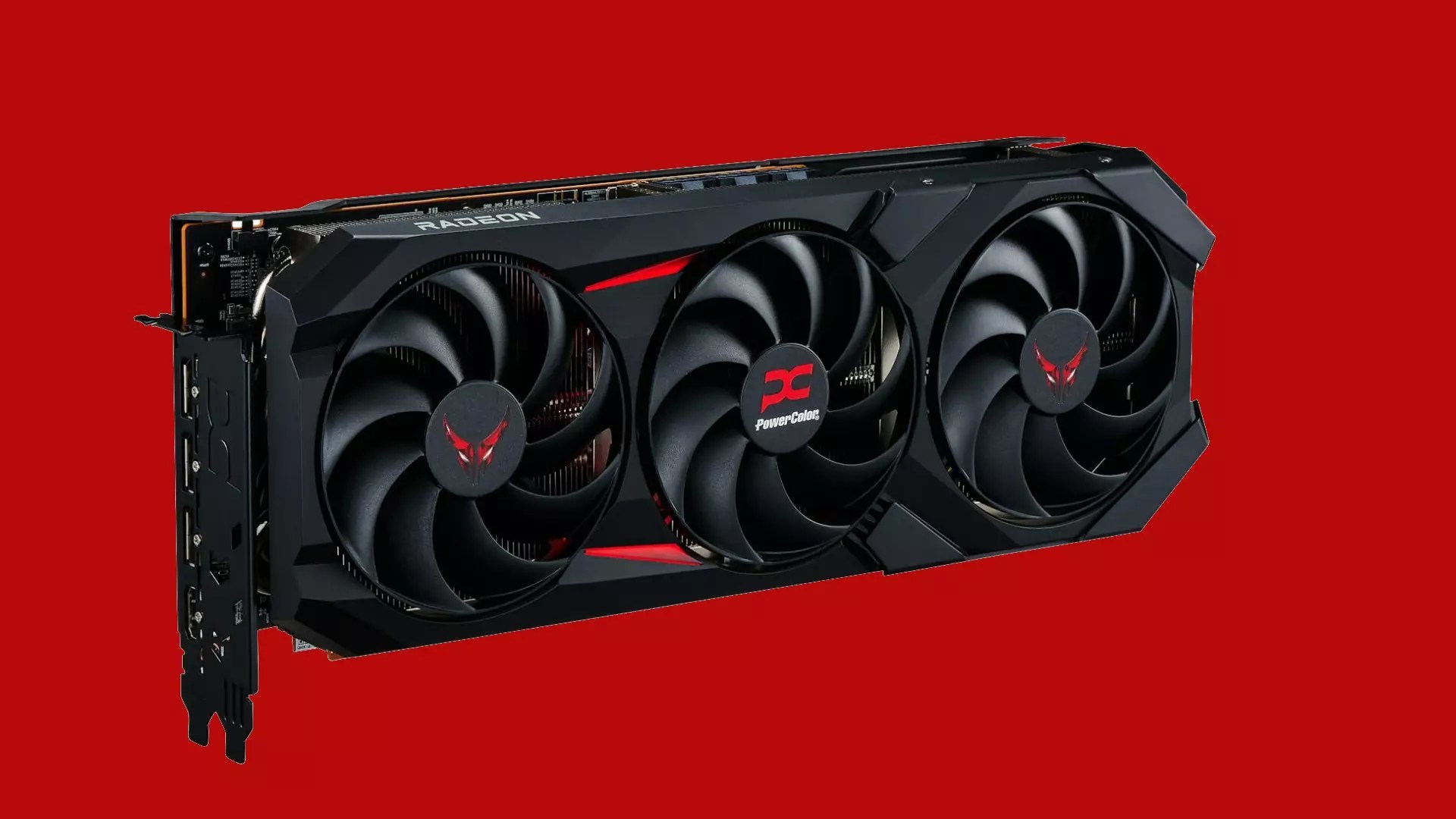The AMD Radeon 9070 GRE has recently garnered attention following its official images leak from Powercolor, a prominent graphics card manufacturer. With the radical design resembling its predecessors like the RX 9070 and RX 9070 XT, enthusiasts are eager to dissect what this new addition means for budget-conscious gamers. While the initial availability seems poised for China, an international launch could quickly follow if the demand is high enough. This card is not just another variant; it epitomizes AMD’s strategy to cater to diverse market segments, particularly those who prioritize performance without breaking the bank.
A Deep Dive into Technical Specifications
The Radeon 9070 GRE is built on the advanced AMD Navi 48 architecture, similar to the RX 9070 and RX 9070 XT. However, some components have been intentionally disabled, resulting in a trimmed-down configuration. With 3,072 Stream Processor cores—diminished from the 3,584 in the standard model and the 4,096 cores in the XT variant—the GRE version is aimed at gamers who require solid performance without the absolute top-tier features. The expectation is that the card will utilize a 192-bit memory bus and 12 GB of GDDR6 memory, creating more affordability yet showcasing commendable operational efficiency.
The implications of these specifications are crucial. The subtle reductions in cores and memory bandwidth could potentially signal a shift in gaming hardware design. As game developers increasingly optimize for a wide range of hardware configurations, something like the GRE may cater perfectly to mid-range gaming setups without sacrificing too much power. For many users who play at 1080p or 1440p, this card could represent a sweet spot in performance and price.
Pricing Strategies and Market Positioning
The expected retail price for the Radeon 9070 GRE stands significantly lower than its cousins, pointing to an initial MSRP of around $379, which would strategically place it against Nvidia’s RTX 5060 TI. Notably, the competitive landscape dictates that not only do the raw specifications matter, but also how trends shift toward value for performance. While the pricing strategy hints at a more accessible entry point for gamers, one must wonder how this card will hold up in the face of Nvidia’s powerful feature set, including its groundbreaking DLSS 4 technology and multi-frame generation capabilities.
The price-to-performance argument is not just an essential metric; it embodies the purchasing decision for many gamers. They frequently seek a balance that allows for impressive graphical settings without forcing them to diminish their financial savings. This marketing angle could see the GRE striking the sophomore chord of “being good enough,” a mantra that resonates deeply with players who prefer performance yet are reluctant to pay the top dollar.
Real-World Comparisons: Pure Performance vs. Ray Tracing
Navigating the realm of graphics cards isn’t merely about crunching numbers and specs; comfort with their performance in practical scenarios determines their true value. The Radeon 9070 GRE may hold its own against rasterization benchmarks, showcasing high frame rates and fluid gameplay. However, the elephant in the room remains ray tracing performance, where Nvidia continues to shine. AMD’s ray tracing capabilities still feel a step behind, and while the GRE may perform adequately for basic ray-traced scenes, it will struggle in scenarios requiring high-fidelity lighting and reflections.
There’s no denying that path tracing, which attempts photorealistic rendering, remains a daunting request for any budget card. For gamers looking to dive into titles that heavily rely on ray tracing, will the GRE meet expectations, or will it fall short in visual fidelity? These questions frame the consumer choice of picking between an AMD card known for its raster performance and the feature-rich, but often pricier, Nvidia solutions.
The Future of the Radeon 9070 GRE
As the world anticipates the formal launch of the Radeon 9070 GRE, it remains essential to consider its possible fate in both the local and international markets. Should this card remain confined to China, the discussion on its efficacy may emerge as merely speculative for a broader audience. However, if the hype continues and demand grows, a worldwide introduction seems likely.
At the core of the emerging landscape, the GRE signifies a pivotal moment for AMD—one centered on offering competitive options for the mainstream gaming masses. As users await from more official announcements and testing reviews, the excitement surrounding these cards expresses a common sentiment: gamers ought to have access to engaging performance without an exorbitant price tag.


Leave a Reply